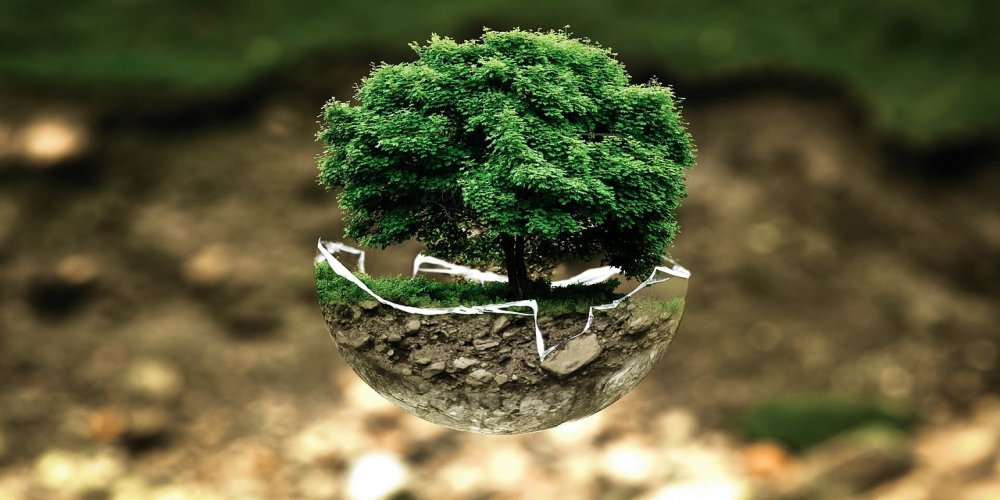By Shreya K Sugathan

In the course of history, there comes a time when humanity is called to shift to a new level of consciousness, to reach a higher moral ground. A time when we have to shed our fear and give hope to each other.
That time is now.”
Wangari Maathai, Nobel Peace Prize Speech, 2004
A good sixteen years have passed since Wangari Maathai gave her acclaimed Nobel Peace Prize acceptance speech, her strong sound resonating in the Oslo City Hall, asking us to protect the home of the tadpoles, urging us to pass on a world of beauty and wonder for posterity. Ironically we are as or more distant from the dream of Wangari Maathai in 2020 than in 2004. The EIA draft of 2020 has been the result of a continuous deterioration of ‘conservation culture’ as Vandana Shiva, the renowned Indian environmental activist and anti-globalization author, puts it. Amidst bulging red data books and violent screams for help, it seems we are busy fixing the final nail on the coffin. If this ringing sound of death-knell hasn’t reached your ears yet, then you are not deaf, you are pretending to be one!

India’s Environment Protection Laws can be traced back to the Stockholm Conference of 1972. India became a signatory of the Stockholm Declaration and enacted laws to protect water (1974) followed by air (1981) soon after. Clearly, our minds are conditioned to invent cures in the aftermath rather than taking steps to prevent a disaster beforehand. Hence, you can observe a not-so-surprising silence on the environment front till the Bhopal Gas Tragedy in 1984 which was followed by the Environment Protection Act of 1986. Under the Environment Protection Act, India notified its first set of EIA norms in 1994, subsequently modifying it 2006. This year the Government modified it again, incorporating the amendments and relevant court orders from 2006, resulting in the EIA draft of 2020.
A quick run through the most controversial aspects of the Draft EIA 2020 would pay testimony to the point I seek to convey through this essay. The Government has given priority to ‘ease of doing business’ in the draft. This curiously evident bias has led to the overlooking of the most obvious consequences of such a legislation. Some of the most bizarre amendments proposed include removal of post-facto clearance and abandonment of public hearing. The removal of post-facto clearance would allow a project or an industry that is already violating EIA to apply for clearance. The time period given to the public hearings on projects has been reduced from 30 to 20 days. To understand how the act makes a mockery of all the environment laws, we need to go further. The draft says that the violations have to be reported either by a Government authority or by the developers themselves. Here we are left to wonder about the altruistic intentions of the developers and their assumed generosity to disclose, suo moto, that they broke the law.
There are other troubling provisions which should be a matter of grave concern to every mind who has at least had a passing thought about their surroundings. A long list of projects have been taken out of the ambit of EIA including any project the Government would label as ‘strategic’. Here you are not wrong if you are bothered about the subjective manifestations of the word ‘strategic’, it could be pretty much anything. Construction projects up to 15,000 sq.m are exempted from EIA. Another list of projects has been included under category B2 which requires no environment clearance at all. The area falling within 100 km aerial distance from LOAC has been termed as the ‘border area’, about which no information will be placed on the public domain. This area covers much of the North East which is renowned for its ravishing beauty. Likewise, the draft is filled with major and minor causes for worry.
This is the moment to go back to stories like the one that happened in ‘Mavoor’, a small village in Kozhikode, Kerala. Mavoor, once a lively village, turned into a ghost town after the establishment of a pulp producing factory by Birla group named ‘Gwalior Rayons’. As the industry flourished, the nearby Chaliyar river started dying a silent death. As dead fish afloat in poisonous water, Chaliyar turned into a spectre of what it once was. The natives, waiting eagerly to get employed in the new factory, took their last breath, leaving their hopes looming in the air. The content of lead, mercury and chromium in the river exceeded tolerable levels. The cancer rates shot up to an alarming level and the natives began to fall under the grip of diseases like asthma, tuberculosis and cardio-pulmonary diseases. This led to a series of protests which finally culminated in the closing of the factory in 2001. This is just one story from one remote village. Let’s just take a moment to reflect on the enormity of the problem.

We are treading in the twenty-first century. A story happening in a remote village is not going to be confined to its boundaries. The wild fires in Amazon would send panic waves across the world. As Nehru said in his cherished speech ‘A Tryst with Destiny’, “Those dreams are for India, but they are also for the world”. Our dreams are intricately woven together. Wangari Maathai reminds us that by planting trees we are planting the seeds of peace, sustainable development and democracy, the holy-trinity for our future. This giant planet, home to millions of organisms, is asking us to break our dreadful silence this time.
The enormous power we behold demands responsible usage.
Wangari Maathai concludes her speech recounting the story of the clean world she inherited from her parents. My childhood was spent swinging on trees and splashing pristine water all around while my grandfather irrigated his plants. Every new life on this planet deserves this ethereal experience. It is time to give a big bear hug to this benevolent planet that has nurtured us generously so far. Not just Friday, but every single day, every silent step taken today demands a tiny pause to remind ourselves- ‘That time is now’.


Very well communicated 👏